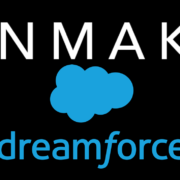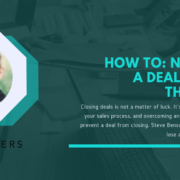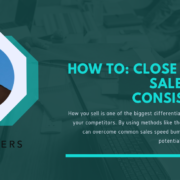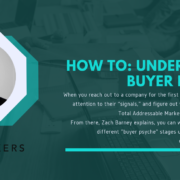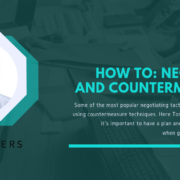If you’re joining a sales team for a tech startup, it’s not enough to just have hard skills. In an interview with Michael Cardamone, we discussed how a salesperson should examine the investors of an early-stage startup, and how knowledgeable the CEO is to predict the evolution of their success. Once you’ve determined whether their goals align with yours, it’s time to move forward. However, in today’s highly competitive job market, soft skills are in more demand than ever at startups, and are an essential part of any well-rounded candidate. In fact, a study by Comeet found that the candidates most likely to get the job are those who are directly contacted by recruiters or hiring managers. By showcasing these skills in your resume, you’re more likely to stand out from your competition. Here’s a list of some skills you should aim to cultivate as part of the sales team:
Ability to listen to what’s being said
In the sales world, making a consumer want to buy your product is the main goal of the profession. According to an article by Forbes, this involves effective two-way communication. Knowing how to ask great questions and truly listening to the customer’s response is the key to making a successful sale. “It’s too easy to stick to the script or to plan your next statement. If you want to sell, you have to understand. To understand, you have to listen with true empathy! Practice is essential to this skill.”
Ability to negotiate and connect
If a client is on the fence about whether to purchase your product or service, it’s up to you to convince them to choose you. In order to do so, you’ll need to practice patience, gather what is needed, and deliver high value while keeping prices reasonable. When you do manage to successfully sell, you’re creating a relationship with the client which will hopefully set the stage for more sales in the future. Keeping level-headed and maintaining a sense of humor will help you bond with your client, forming a sense of connection and positivity.
Ability to cope with chaos
If you want to work at a startup, more often than not, you’ll have to deal with unpredictability and chaos. As a salesperson, the ability to stay organized and disciplined even with multiple projects to juggle will be an essential part of your life.
Medium explains how hitting growth targets can be extremely challenging, and even more so during the early stages of a business. If you let potential sales slip through the cracks due to not following up, you’ll definitely fall behind. The good news is that “if you join a startup already better equipped to expect these chaotic moments, the wild wins will feel even more euphoric.”
Ability to anticipate client needs
It’s a universal truth that everyone wants to feel special. By making your customers feel like you can read their minds regarding what they want, you’ll leave them feeling like they’ve had an experience specifically tailored to them, leading to an increase in their trust and loyalty. To cultivate this skill, Inc. suggests taking advantage of industry research and trend reports to see what the next big thing is. You’ll stay a couple of steps ahead, and be able to cater to the future needs of your clients and expand their current scope.
Ultimately, not everyone is cut out for a life in sales. It can be a physically demanding job, but working on this list of soft skills can help you land a coveted role at a start-up, provided that you’re up for the challenge.
If you’re a salesperson looking to jump start your career or make the next big move, Rainmakers can help connect you with companies seeking a skilled sales rep just like you. To join our career market place, visit www.Rainmakers.co






